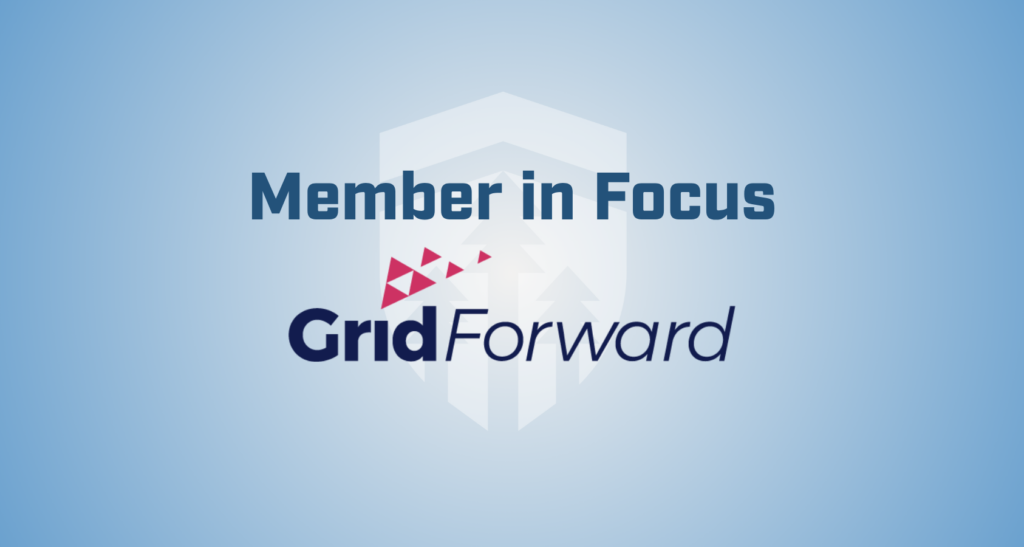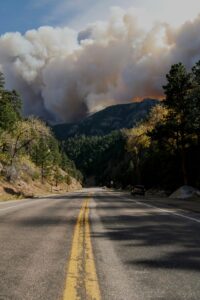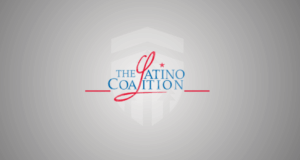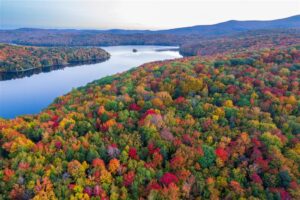Member in Focus: Grid Forward
Partners in Wildfire Prevention is a coalition of organizations from various industries, regions, and sectors committed to raising awareness about the growing wildfire crisis and advocating for a coordinated, national response to wildfires. Our broad and diverse membership demonstrates how wildfires are truly a national issue and require a national solution.
To learn more about how the wildfire crisis is impacting the United States (U.S.) energy infrastructure, we spoke with Grid Forward Executive Director and CEO Bryce Yonker to better understand the importance of hardening the energy grid and what they are doing to improve wildfire resilience.
About Grid Forward
Grid Forward is a non-profit organization dedicated to modernizing the grid through the use of advanced technology, policy progress, and business innovation that enhance the energy system’s performance. Founded in 2009, Grid Forward has over 100 members, including grid operators, nonprofit partners, government agencies, industry groups, and more.
Their Work on Wildfire Prevention
As part of their effort to advance the overall grid infrastructure, Grid Forward works to identify effective and innovative wildfire prevention and mitigation policies. Understanding the opportunities available at the federal level is a crucial component of their strategy on wildfires. As part of this effort, Grid Forward helped bring together stakeholders to identify opportunities in the Infrastructure Investment and Jobs Act (IIJA) to support projects focused on deploying advanced capabilities to help communities mitigate wildfire risk.
“We’ve been really active to understand the opportunities that are presenting themselves at the federal level and then to help bridge those connections, bringing people to the table to leverage the resources that may be available,” said Yonker.
In June 2025, they held a symposium titled “Standing up to Wildfire: Practical Tech and Tactics for Utilities” in Portland, Oregon. The event brought together stakeholders from across various industries and sectors for a day of informational panels on ways to enhance community safety and strengthen grid infrastructure in the face of catastrophic wildfires.
What They Support
Grid hardening, strengthening grid infrastructure to enhance grid safety and reliability, is a foundational starting point for improving grid safety and mitigating the impact of wildfires, according to Yonker. This includes utilizing advanced technological tools, such as cameras and sensing equipment for environmental and grid conditions, which can provide grid operators with early detection capabilities and real-time visibility into the risks that wildfires pose, potentially reducing their downstream impacts.
“Our central thesis is around using the tools that we now have increasingly available to tackle wildfire risk head-on, if at all possible,” said Yonker.
Additionally, Yonker explained how energy grid infrastructure can be modified to accommodate elevated or extreme wildfire conditions. This ranges from adjusting components of grid infrastructure, such as switchgears or recloser settings, to implementing grid architecture strategies like segmentation and temporary de-energizing. Grid hardening is also crucial for helping communities maintain power in the aftermath of wildfires.
The organization also emphasizes the importance of communication among stakeholders, including electric companies, first responders, and the communities in which they operate. When wildfires occur, conditions can change quickly, and it’s essential to have plans in place for emergencies, including how energy companies communicate with customers and beyond.
“When we get to elevated wildfire risk conditions, grid operators are basically working hand in hand with emergency management organizations. So, they’d be working with the county emergency management department, they’d be working with a fire agency, with other critical services entities because grid operators are part of the ecosystem that would be considered critical,” said Yonker.
Why They Support the Fix Our Forests Act
Grid operators are a key stakeholder in wildfire policy, and Grid Forward believes in the importance of resources that can enhance the resilience, responsiveness, and preparedness of energy grid infrastructure against wildfires. The Fix Our Forests Act supports this effort, addressing some areas of concern for grid operators as they work to reduce wildfire risk.
Key among those issues is managing fuel supplies, vegetation in forests that have the potential to cause wildfires. Grid Forward emphasizes the importance of proactively dealing with overly dense forests and vegetation when they are out of equilibrium through methods such as prescribed burns.
“Grid operators are important stakeholders, and we’re advocates for any resources that can make grid infrastructure more resilient to wildfires, better prepared, and more responsive. But if we don’t deal with the source, in this case, the fuel supply, it’s all for naught,” said Yonker.
Why Grid Forward Joined Partners in Wildfire Prevention
A national response to wildfires is crucial to Grid Forward, as addressing this issue requires federal support reinforcing local and regional efforts. One key priority is ensuring federal support for grid hardening initiatives and resources at the local level, as communities may struggle to fund improvements to their energy grid infrastructure independently. As a member of Partners in Wildfire Prevention, Grid Forward believes in the value of having a coordinated, collective group that can effectively advocate at the federal level.
“Wildfires don’t care about utility boundaries [or] service territories. Wildfires don’t care about state boundaries. They’ll burn wherever they’re going to go. The scale and the impact and the magnitude of what these mean for stakeholders, communities in general that are way beyond energy grid stakeholders, is just so significant that we’re happy to be a part of a coalition that’s addressing this holistically and at the national level,” said Yonker.



